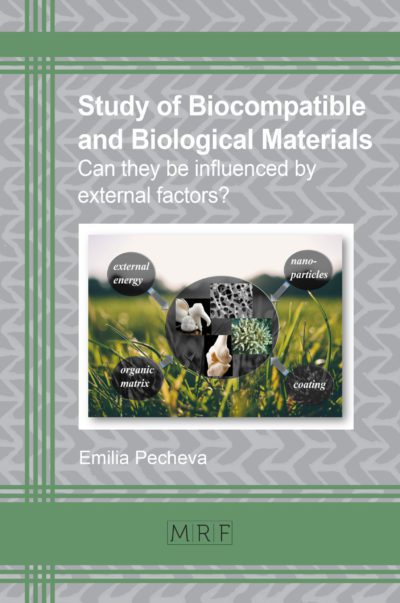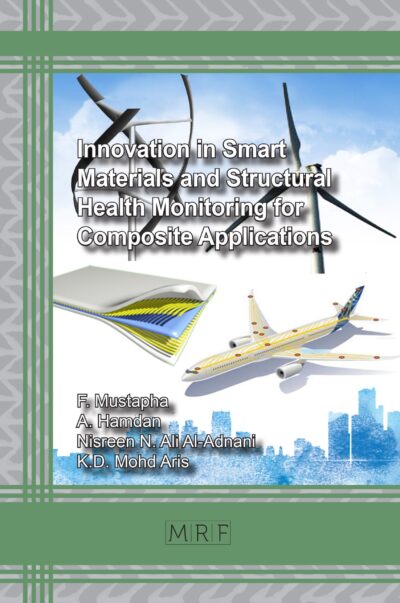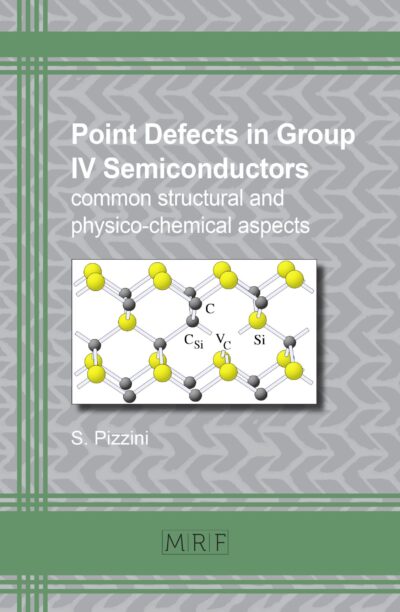Alternative Concrete – Geopolymer Concrete
Emerging Research and Opportunities
Adrian LĂZĂRESCU, Henriette SZILÁGYI, Cornelia BAERĂ, Andreea HEGYI
Materials Research Foundations Vol. 109
Publication Date 2021, 138 Pages
Print ISBN 978-1-64490-152-6 (release date September 2021)
ePDF ISBN 978-1-64490-153-3
DOI: 10.21741/9781644901533
Portland cement based concrete is the most versatile, durable and reliable building material. Unfortunately, the production of Portland cement is environmentally unfriendly. An interesting alternative is provided by alkali-activated geopolymer materials (AAGM). This book focuses on fly ash-based alkali-activated geopolymer concrete, its production and characteristic properties. The re-use of waste materials and industrial by-products, such as fly ash, is not only economically of interest but also helps to reduce carbon dioxide emissions. The carbon footprint of these materials is much lower than that of concrete using ordinary Portland cement. They thus offer new sustainable solutions to the construction industry. The book references 132 original resources and includes their direct web link for in-depth reading.
Keywords
Geopolymers, Geopolymer Concrete, Alkali-activated Geopolymer Materials (AAGM), Portland Cement, Fly Ash-based Geopolymer Concrete, Reduction of Carbon Dioxide Emissions, Concrete Applications, Self-Compacting Concrete, High-strength Concrete, High-performance Concrete
Table of contents
Introduction 6
Acknowledgement 10
Global Perspectives on the Production of Industrial By-Products in the Context of “Circular Economy” 1
Retrospective Regarding Research in the Field of Alkali-Activated Geopolymer Materials 4
2.1. Geopolymers and geopolymerisation – chemical characteristics 4
2.2. Geopolymers and geopolymerization – mechanical characteristics 7
2.3. Types of alkaline activators used in the synthesis of geopolymers 9
2.4. Alkali-activated geopolymer materials mix-design 10
2.4.1. Properties of the alkaline activator 10
2.4.2. Heat curing procedures 11
2.5. Properties of alkali-activated geopolymer materials 12
2.5.1. Mechanical properties of alkali-activated geopolymer materials 12
2.5.2. Durability of alkali-activated geopolymer materials 13
2.5.3. Remarks 13
2.6. Factors influencing alkali-activated geopolymer materials 13
2.6.1. Physical and chemical properties of fly ash 13
2.6.2. Alkaline activator and heat treatment properties 14
2.6.3. Mixing procedure 15
2.7. Alkali-activated geopolymer materials applications 15
Raw Materials Used in the Production of Alkali-Activated Geopolymer Materials 17
3.1. Why alkali-activation? 17
3.2. Portland cement and fly ash 18
3.2.1. Fly ash for cement 23
3.2.2. Fly ash for construction industry 24
3.2.3. Fly ash as type II addition for concrete 24
3.2.4. General conditions for producing fly ash 27
Development of Alkali-Activated Geopolymer Binder 33
4.1. General principles for the production of alkali-activated geopolymer materials 33
4.2. Alkali-activated fly ash-based geopolymer paste – raw materials characteristics 35
4.2.1. Fly ash (FA) 35
4.2.2. Alkaline activator (AA) 37
4.3. Alkali-activated fly ash-based geopolymer paste technology 40
4.4. Alkali-activated fly ash-based geopolymer paste characteristics 43
4.4.1. Alkali-activated geopolymer paste mixtures (AAGP) 43
4.4.2. Physical-mechanical properties of the alkali-activated geopolymer paste mixtures 46
4.4.3. Technological and mix-design influences on the performance of alkali-activated geopolymer binder 54
4.4.3.1. Influence of age on the compressive strength 54
4.4.3.2. Influence of the alkaline activator to fly ash ratio (AA/FA) on the compressive strength 56
4.4.3.3. Influence of the alkaline activators ratio (Na2SiO3/NaOH) on the compressive strength 57
4.4.3.4. Influence of the molar concentration of the NaOH solution on the compressive strength 59
4.4.3.5. Interdependence between molar concentration of NaOH solution and water in the mixture 62
4.4.3.6. Fly ash type influence on the compressive strength 65
4.4.3.7. Influence of fly ash physical properties on the compressive strength 67
4.4.4. Microscopic evaluation of alkali-activated geopolymer paste mixtures 69
Development of Alkali-Activated Fly Ash-Based
Geopolymer Concrete 74
5.1. Raw materials characteristics 74
5.2. Alkali-activated fly ash-based geopolymer technology 75
5.3. Alkali-activated fly ash-based geopolymer concrete mixtures 75
5.4. Alkali-activated fly ash-based geopolymer physical-mechanical properties 77
5.4.1. Fresh-state properties 77
5.4.2. Apparent density 78
5.4.3. Flash setting 79
5.4.4. Physical-mechanical properties of the alkali-activated geopolymer concrete mixtures 81
5.4.5. Microscopic evaluation 85
5.5. Technological and mix-design influences on the performance of alkali-activated geopolymer concrete 88
5.5.1. Influence of the molar concentration of the NaOH solution on the compressive strength 88
5.5.2. Influence of NaOH type on the compressive strength of AAGC mixtures 88
5.5.3. Influence of Na2SiO3/NaOH ratio on the compressive strength of AAGC mixtures 89
Research Regarding Alkali-Activated Fly Ash-Based Geopolymer Concrete Applications 92
6.1. Alkali-activated fly ash-based geopolymer panels 92
6.2. Alkali-activated fly ash-based geopolymer paving blocks 94
6.3. Legislative framework on the possibility of using alkali-activated geopolymer paving blocks 106
Conclusions and Final Remarks 107
References 113
List of Symbols 125
About the Authors 127














